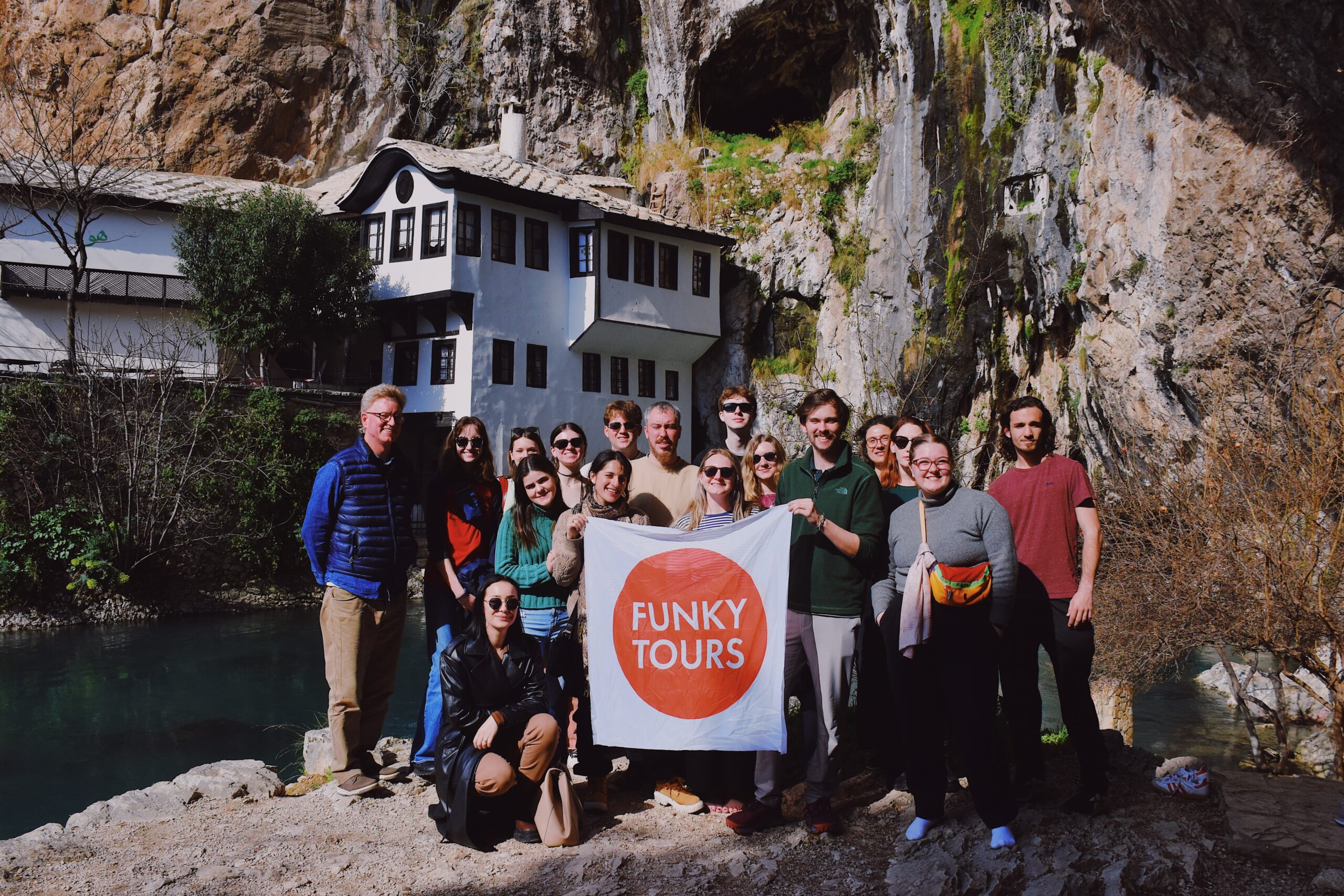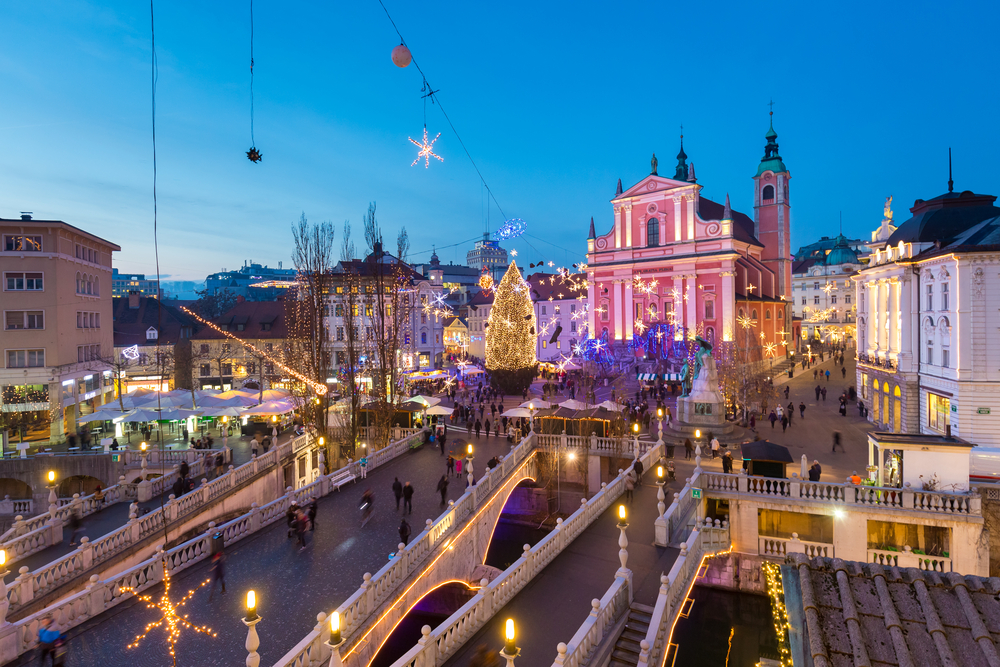THE STRONGEST KNOT MADE BY THREE MONOTHEISTIC RELIGIONS

Herzegovina is not just for outdoor lovers, it also provides you the unforgettable touch with so many different cultures in such a small area. Throughout history people of Herzegovina were extremely tied with religion and it was a part of their everyday life. There are many interesting stories about how the religion impacted the lives of the people, how they were living together in peace and helping each other. Therefore, we are glad to present to you the one of the many positive sides of our country, Bosnia & Herzegovina.
- Over 500 years Bosnia and Herzegovina was a melting pot and intersection of religions.
- Blagaj Tekke is one of the oldest tekkes in the country and is a venue for Dervish Zikr praise-chanting.
- Međugorje is the third biggest European pilgrimage where more than 1 million believers come to visit the place.
- The three stunning Serb Orthodox monasteries: Tvrdoš Monastery, Zavala Monastery and Žitomislić Monastery have become national monuments.
- Sephardic Jewish pilgrimage in Herzegovina is small town of Stolac. The pilgrimage has three graves, one in the middle is Moses Danon grave and the other two are Jewish soldiers who died in Stolac.
Herzegovina’s Rural Spots of Islamic Mysticism, Catholic and Jewish Pilgrimages & Orthodox Monasteries
It’s more impressive if we know that the three different monotheistic religions were living for so long together in peace. Unfortunately in some decades politics were the main problem of the conflicts, but never the religion. We can definitely say that the Muslims, Jews and Christians (Catholic & Orthodox) were respecting and helping each other. Already from the 7th to the 15th century Bosnian Kingdom had two Christian groups, Bosnian Church and Orthodox Church.
In the late 13th century the Catholic Church gained its followers throughout the pope’s help. For the Catholic and Orthodox Churches the Bosnian Church was considered as the heretic sect. Therefore, there is the theory that most of the followers who converted to Islam in the 15th century were the followers of the Bosnian Church. In conclusion, the Ottomans took their chance to spread Islam in that way, while giving benefits to converted ones. The Sephardi Jews came to Bosnia & Herzegovina in the mid 16th century, after they were expelled by the Spanish King. Ottoman Sultan Suleyman the Magnificent accepted the Jewish community and gave them another opportunity.
With this short introduction you have a picture how the multi confessional Bosnia & Herzegovina was born. In conclusion, Bosnia & Herzegovina has been a melting pot for over 500 years.
Blagaj Tekke the Mystical Place under a Clif
The Blagaj Tekke was built in the 15th century and it’s one of the oldest in Bosnia & Herzegovina. It was the place where Dervishes used to live with their families and practice zikr (religious chanting). It is located 14 km from Mostar and with the car you need about 15 minutes to get there. Other options are bus lines or taxi, both convenient. The location is charming and breathtaking, just next to the Buna river source. After the visit to the Tekke you should stop for a jaw – dropping lunch. One of the proposals is the Buna River trout fish, and as a desert you should try the fig cake.
Dervishes are the mystical muslims and followers of the sufism (the mystical teaching in Islam). Through mysticism they are striving for higher cognitions and in that way trying to be closer with God and nature. Therefore, dervishes also perform the zikr in the way that after some time they fall in trance. The main reason for the falling into trance is the belief that they will be closer to God and feel His goodness.
The Blagaj Tekke has many rooms and they are completely arranged according to the Islamic tradition. The main rooms of the Tekke are the living room, zikr room, turbe, kitchen and hamam.
Small room for isolation and zikr is on the ground floor looking at the water source, the kitchen is also there. On the first floor there is the hamam (bathroom), two rooms for group zikr (men and women). Another small room connected to the first floor is the “turbe” (grave) of two Ottoman scholars. “Turbe” is probably empty and it’s just a symbol not to forget the Ottoman scholars and their goodness.

Međugorje as one of the biggest Catholic Pilgrimages in the World
Međugorje is the third biggest European pilgrimage where more than 1 million believers come to visit the place. Everything started on 24th of June in 1981 when six children claimed that they saw the apparition of Virgin Mary. In Yugoslavia the pilgrimage was totally banned, except for the last few years before the breakup of the country. Therefore we can say that the mass pilgrimages started in the early 90s. Some of the visionaries claim to receive messages from the Virgin Mary on the second of the month or on twenty – fifth of the month. Depending on which visionaire we speak about.
Many of the people reported visual phenomena including the Sun spinning in the sky or changing colours and figures such as hearts and crosses around the Sun. Some visitors have suffered eye damage while seeking to experience such phenomena. The Vatican still doesn’t recognise Međugorje as the holy Catholic pilgrimage. Officially, it is still under investigation by the Holy See. Regardlessly, until now over 30 million believers visited Međugorje.
Međugorje started developing rapidly after the mass pilgrimage started. A small village became a nice town and, nowadays, there are many religious events. One of the events is the Youth Festival that is held every year. It is also a place where children with special needs come with their parents in the hope that they will feel better. The mass in the main church during the pilgrimage is held in many languages, such as English, Italian, Spanish, Polish.
Never-mind what people think about the apparition, here you can learn about Catholicism and meet lots of good people.

Orthodox Christian monasteries as the sources of peace
One of the most known monasteries of Serb Orthodox Church are Tvrdoš Monastery, Zavala Monastery and Žitomislić Monastery. All of them are national monuments of Bosnia & Herzegovina.
Tvrdoš Monastery
Tvrdoš Monastery dates from the 15th century and it was built just next to the Roman Church from the 4th century. The location of the monastery is 7 km from Trebinje. The monastery is dedicated to the Dormition of the most Holy Theotokos and also has a cathedral built in 1508. Vicko Lavrov was the painter of the murals inside the cathedral and he was actually from Dubrovnik. The monastery remained a seat of the Metropolitans of Herzegovina until the fall of Venice in 1694. Nowadays the monastery is well known for the best quality wine production (Blatina and Žilavka grape varieties).
Zavala Monastery
First written document about the Zavala Monastery is from the 16th century. Zavala Monastery is located 55 km to the north from Trebinje. The monastery is dedicated to the Presentation of Mary. The northern wall of the monastery’s church is made within a cave. In this monastery Basil of Ostrog entered into monasticism. Unfortunately the monastery was damaged during WWII and the last war in Bosnia & Herzegovina, nowadays reconstructed. Monastery Zavala is also listed in UNESCO heritage. If you visit the monastery then you should also visit the biggest cave in Bosnia & Herzegovina. Vjetrenica is located just next to the monastery.
Žitomislić Monastery
Žitomislić Monastery was built in 1566. by the permission of the Nevesinje qadi (sharia court judge). The monastery is a proud owner of highly artistic iconostasis and has a scriptorium on an enviable level. At the height of its existence the monastery was supported by large land holdings, managed by the monks. Žitomislić Monastery is part of the Herzegovinian wine route. The monastery is situated 19 km from Mostar.

Sephardic Jewish pilgrimage in Herzegovina
The place of the pilgrimage of the Sephardic Jews was the town of Stolac. Unfortunately after all the tragedies that the Jewish community went through in the last 100 years, the pilgrimage is not visited. It’s actually a heartbreaking story and a perfect example how different religious groups can live together. The pilgrimage has three graves, one in the middle is Moses Danon grave and the other two are Jewish soldiers that died in Stolac. Therefore, by the Bosnian Jews, exists a saying: “Blessed are those two when they are buried with that good man”.
Moses Danon was a supreme rabbi, elected in 1815. by the Jewish community of Sarajevo. In the Ottoman Empire, Jewish community had their on judges were the Muslim side mostly was not interfering.
In Sarajevo used to live a province governor Rushdi pasha, allegedly awkward and a bribe – taker. The problems began when Moses Havijo, a member of the Jewish community, converted to Islam. Moses Havijo was clever and he managed to get into the dervish order, therefore he was called dervish Ahmed. After some time he disappeared and Rushdi pasha accused the Jewish community that they killed him because he converted to Islam. In conclusion, Rushdi pasha wanted the Jewish community to pay the so-called “price of blood” in money. Some of the accused Jews gave the money to Ali Asak and he started a rebellion with other Muslims against Rushdi. In that way Moses Danon was saved and he promised to go on a pilgrimage to Jerusalem. He expressed his wish that, in case he passes away somewhere on the way to Jerusalem, he should be buried at that exact place. Therefore he was buried in Stolac, Krajšina.





















